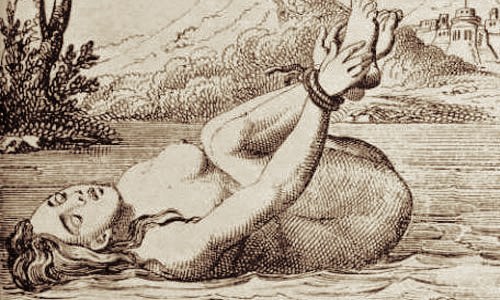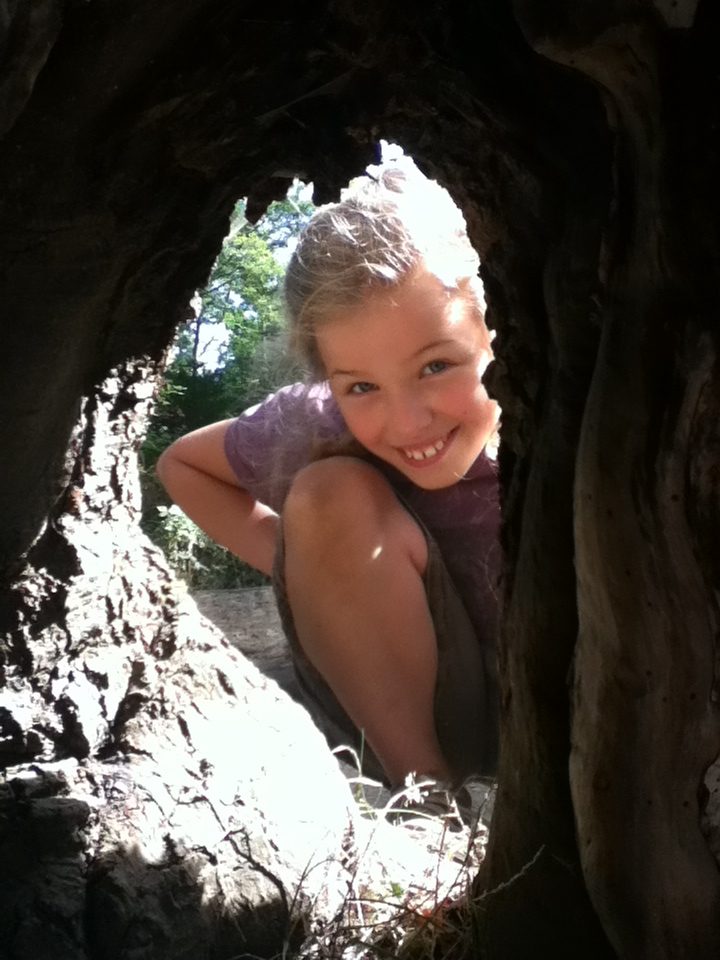If You Float You’re a Witch
I’m currently Assistant Directing the Caryl Churchill play Vinegar Tom, which our director, Kaytlin McIntire calls, “a play about witches with no witches.” Written in 1976, at the height of the Second Wave Feminist movement, it addresses the social and political origins of the 17th century European witch hunts – and the history is bleak.
I’ve done an extensive amount of dramaturgical work on the time period, and the picture it paints is one of complete condemnation and persecution of the female sex. The witch hunts were essentially designed to root out anyone that opposed or didn’t conform to the patriarchal model of the time (and this one). Specifically, this meant single women, widows, the old, and the poor. All of these people were considered a needless expense of their village, because they didn’t neatly fit into the “woman’s” role as wife, child-bearer, or even sex object. If they couldn’t be used for baby-making, they were of no use to society.
I didn’t grow up with any sort of religion, so it shocked me to hear the Christian assertion that women were to pay for Eve’s sin by bearing children, and that even having done this, must also suffer the pain of childbirth. There was no way for them to ultimately absolve themselves; they were inherently evil.
This mindset was the genesis, so to speak, of the “swimming” test performed on witches at this time. In it, an accused “witch” was tightly bound and then tossed into a body of water. If they floated, it meant that the “holy” water was rejecting them and they were indeed a witch. If they sank, they were innocent. Of course, this often meant that they were also dead.

Women could be condemned simply for the way they looked – sound familiar? In Antonia Fraser’s book, The Weaker Vessel, she says:
In the writhings of the popular imagination concerning the old, all these webs – woman’s weakness, her voracity, ugliness and Satan – became darkly and menacingly entangled. The bodies of old women, twisted and gnarled by time like tree trunks, marred perhaps by protuberances and growths of different sorts including harmless warts and lumps and dangerous tumours – might the dissolving eye of fantasy not see in these ugly excrescences and bumps strange teats which the devil could suck? Was a particular wart or discoloration a mark of old age – or the witch’s mark, which when pricked did not hurt? (103)
The witch prickings were a particularly disturbing phenomenon of the time. They were designed to discover what were known as “devil’s marks,” which in truth, could’ve been as simple as a mole, wart, or freckle. Witch hunters would use long, ornate needles to poke these spots, claiming that if the woman was a witch, she would not feel pain. Since they were, in fact, simple blemishes on the skin, this practice was really just a method of torture to induce a confession. Successfully condemning a witch was a profitable market, and as such, professional witch hunters began to emerge. In order to ensure conviction, the witch hunters developed trick retractable needles which, needless to say, did not inflict pain on the victims, but did confirm them as witches in the eyes of the public.
The public nature of these accusations and trials were what drove them forward across miles and years. “Heresy” was the crime of the age, and resulted in millions of deaths over several centuries. This means that any act or even thought “against God,” was punishable, usually by death. To make things even more complicated, the rules around this were entirely subjective and changed rapidly. The reign of terror inflicted by Protestants and Catholics alike had far-reaching and deeply- penetrating consequences. They created an atmosphere of fear among the general populace, which spread like wildfire. There was no limit to the violence that people inflicted upon one another – it was every person for themselves. And, as is still the case, women and children were the most vulnerable groups, as they had no freedom or control over their own lives. Women’s very existence was a sin. They weren’t considered people, and so were subjected to any form of torture, humiliation, or punishment that the nobility, clergy, and lawmakers could dream up.
While the free reign of such abuse has been curtailed in the present day, its roots are still felt and its repercussions apparent. We are still condemning women for daring to challenge the status quo. We are still silencing their voices. There is still no justice for the wrongs that have been done, and that continue to be done to women.
So where do we go from here? Where can we find the seeds of hope?
In each other. In our communities.
The most powerful tool used during the religious wars and the witch hunts was division – divisiveness. People were pitted against each other and convinced of “the other’s” wrongdoing. They were conditioned to be suspicious of their neighbors, not to sit down and get to know them. The result has been centuries of assumptions and taking sides. One of the tragic elements of the feud between Catholics and Protestants is that, at the end of the day, they were really just splitting hairs over what it meant to be truly faithful to God. And in the meantime, they completely ignored true Christian values – the teachings of Christ. In fact, they trampled, maimed, and mutilated them – and their fellow human beings.
At some point we must consider the cost of our humanity. What is “righteousness” worth? Your life? Someone else’s? An entire group of people? That’s what it has been, historically.
We must switch this narrative if we’re going to survive – and thrive. We need to start looking out for one another – investing in the human race, as a whole. We need to break down the barriers and walls that have been built and reinforced by those in power, who hold no regard for the general population. We need to stop fighting amongst ourselves and focus our attention on dismantling these systems of oppression. Because they are systems. They have figureheads, but those individuals are not solely responsible for the institutions they represent. We need to address the root of our problems and the crises we face today. We need to look back at our history, and we need to look forward toward our future.






